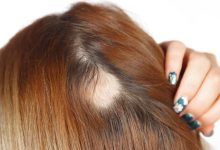Understanding and Treating Red Stretch Marks: A Comprehensive Guide
Stretch marks, also known as striae, are a common dermatological condition that manifests as red or purple lines on the skin. Initially appearing in vibrant colors, these marks gradually fade to a lighter hue over time. They often occur in areas of the body that undergo rapid changes, such as the abdomen, hips, thighs, breasts, and upper arms. Understanding the causes of red stretch marks, their physiological mechanisms, and the effective treatment options available can empower individuals to manage this condition more effectively.
The Physiology of Stretch Marks
Stretch marks develop when the skin is subjected to rapid stretching, leading to a breakdown of collagen and elastin, two critical proteins responsible for skin elasticity and firmness. The skin’s rapid expansion can occur due to various factors, including:
- Pregnancy: Hormonal changes and weight gain during pregnancy can cause significant stretching of the abdominal skin.
- Puberty: Rapid growth spurts during adolescence often lead to the formation of stretch marks.
- Obesity: Significant weight gain can stretch the skin beyond its elastic capacity.
- Medical Conditions: Certain conditions, such as Cushing’s syndrome and Marfan syndrome, may predispose individuals to develop stretch marks.
- Genetics: Family history can play a significant role in the likelihood of developing these marks.
Why Red Stretch Marks?
The initial coloration of stretch marks is often red, purple, or dark brown due to the underlying blood vessels and inflammation. This coloration indicates that the marks are relatively new. As time progresses, these marks typically fade to a white or silvery hue as the blood vessels contract and the inflammation subsides.
Treatment Options for Red Stretch Marks
While stretch marks are a normal and often unavoidable aspect of skin health, many individuals seek to minimize their appearance. Several treatment options are available that target the redness and overall visibility of stretch marks:
-
Topical Treatments:
- Retinoids: Products containing retinoid compounds, such as tretinoin, can promote collagen production and skin regeneration. These are most effective when used on red stretch marks and are generally advised to be applied at night to allow for maximal absorption.
- Hyaluronic Acid: Known for its moisturizing properties, hyaluronic acid can improve skin texture and reduce the appearance of stretch marks when applied regularly.
- Cocoa Butter and Shea Butter: While these natural moisturizers do not remove stretch marks, they can enhance skin hydration and improve its overall appearance.
-
Laser Therapy:
- Pulsed Dye Laser (PDL): This treatment targets the blood vessels within red stretch marks, reducing redness and promoting a more uniform skin tone.
- Fractional Laser Resurfacing: This method stimulates collagen production by creating micro-injuries in the skin, promoting healing and improving the texture and appearance of stretch marks over time.
-
Microneedling:
- This minimally invasive procedure involves the use of fine needles to create controlled micro-injuries in the skin. This stimulates collagen and elastin production, helping to improve the appearance of stretch marks. Microneedling can be particularly effective for red marks, as it promotes a quicker healing response.
-
Chemical Peels:
- Chemical exfoliants, such as glycolic acid, can help in the removal of dead skin cells and promote new skin growth. This process can aid in improving the appearance of stretch marks, particularly those that are red or pigmented.
-
Surgical Options:
- In severe cases, surgical procedures such as abdominoplasty (tummy tuck) may be considered. However, these options are typically reserved for individuals with extensive skin laxity and require significant recovery time.
Prevention Strategies
While not all stretch marks can be prevented, there are several strategies individuals can employ to reduce their likelihood of developing red stretch marks:
- Maintain a Healthy Weight: Gradual weight gain and loss can minimize skin stretching and reduce the likelihood of developing stretch marks.
- Stay Hydrated: Adequate hydration can help maintain skin elasticity and overall health.
- Nutritional Support: Consuming a balanced diet rich in vitamins and minerals, particularly vitamins A, C, and E, can support skin health. Nutrients like zinc and silica are also important for maintaining collagen integrity.
- Moisturization: Regularly applying moisturizers can help keep the skin hydrated, potentially improving its elasticity and resilience to stretching.
Conclusion
Red stretch marks are a common skin condition that many individuals experience, particularly during times of significant physical change. While these marks may initially cause concern, understanding their physiological basis and exploring effective treatment options can empower individuals to manage their appearance confidently. A combination of topical treatments, laser therapies, and preventive strategies can yield positive results in minimizing the visibility of red stretch marks, allowing individuals to embrace their skin with greater assurance. Ongoing research continues to explore new treatment modalities, further enhancing our ability to address this widespread concern in dermatology.

